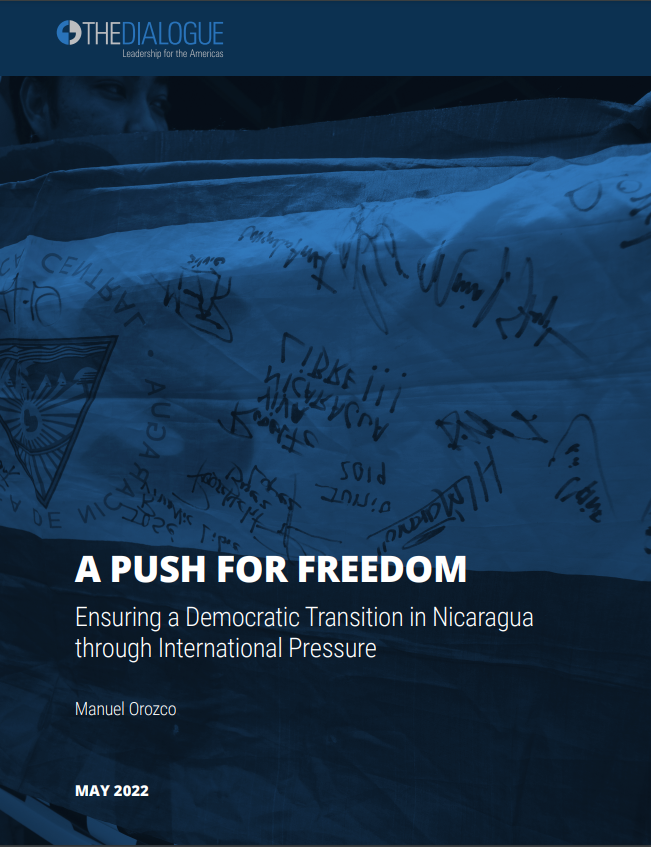
Migrant Remittances & Development in the Global Economy
How do patterns of migration and remittances differ across regions? What kinds of frameworks support the contributions of remittances to local development?
This post is also available in: Español
Since 2018, the Nicaraguan government, under Daniel Ortega and Rosario Murillo's command, has decided to rule with blanket impunity. Their systematic use of force, criminalization of democracy, economic populism, and disregard for commitments to the international community have led to continued human rights violations, greater migration flows, and a deepening economic crisis. A new report, written by Manuel Orozco, Director of the Migration, Remittances, and Development program at the Inter-American Dialogue, outlines the consequences of the government's impunity and offers a series of recommendations for international engagement that could lead to workable solutions. The report specifically identifies the United States as being particularly suited to lead such efforts, given its credibility among Nicaraguans and the multitude of close ties that bind the countries together, such as trade, foreign assistance, and sustained migration.
The report begins with an introduction discussing the problem of unchecked impunity and the specific legislation the Nicaraguan government has enacted to guarantee total control. Next, it discusses the consequences of impunity, which include electoral fraud, economic instability, a massive migration wave, an insecure and fragmented country, and increasing isolation on the international stage. The report briefly touches upon the mentality of the Ortega-Murillo regime, analyzing their obsession with power, which needs to be understood prior to any international engagement. Finally, the report concludes with a recommended pathway toward a workable solution, through mediation and pressure, which relies on the elements and vehicles contained within the recently signed Renacer Act in the United States.
How do patterns of migration and remittances differ across regions? What kinds of frameworks support the contributions of remittances to local development?
In 2014, remittances to Latin America and the Caribbean grew 4%, reaching at least $62.3 billion.
This report offers recommendations for Central American governments seeking to leverage the economic activities of migrants in a more integral manner.
 Cover Photo: © Confidencial Magazine
Cover Photo: © Confidencial Magazine

